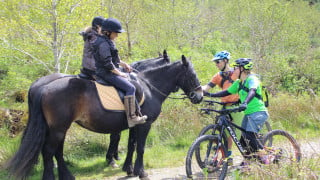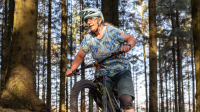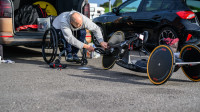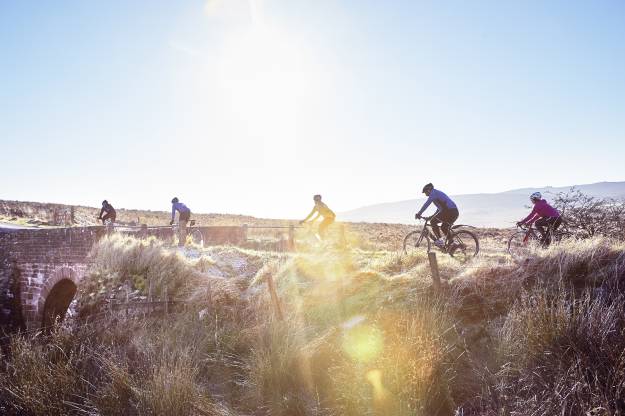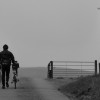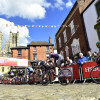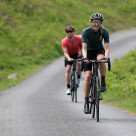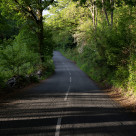By simply showing a bit of consideration, you can make the roads a better place for all.
Say thank you
If another road user or pedestrian waves you through a junction, lets you into a line of traffic or is in any way courteous to you, a nod or a wave is all it takes to acknowledge them and put a smile on everyones’ faces. Hopefully this will encourage them to do it again.
Be considerate of other vulnerable road users
This particularly applies to horses as they can easily be spooked by both groups of riders and individual cyclists, especially when approached from behind. Always let the horse rider know you are approaching, just say “hello” fairly loudly, slow right down, pass as wide as you can and be prepared to dismount and walk past if needed. Avoid hard braking or shifting gears as both can spook a horse.
Further guidance can be found in the article Horses on the road.
Keep the noise down
Although you might be up early for your club run or a sportive, the rest of the town or village where you are meeting might not be, especially if it is a Sunday morning. Keep the pre-ride banter down and there is no need for every rider in a group to shout “clear” at every junction.
Don’t litter
If you are having a gel, bar or a bottle make sure that wrapper goes back into your jersey pocket until you can bin it and take your bottle home to reuse it.. You might see the pro riders dropping wrappers and bottles but that will be in a designated drop zone that will be cleared after the race.
Be sensible in a group
As a cyclist, you are entitled to ride two abreast and, in many situations, it is safer for you, the rest of the riders in your group and it makes overtaking quicker and safer for motorists. However, on narrow or twisting roads it might not be appropriate and you should single out. Also, try to keep groups to a manageable size and, if your club gets big turnouts, split into a number of groups and stagger rolling off.
Open roads mean follow the Highway Code
Just because you have paid an entry fee and are wearing a number, it doesn’t mean the usual rules of the road don’t apply. Whether it is a sportive, the bike leg of a triathlon or a road race, if the roads aren’t closed, you have to obey the Highway Code.
How to ride safely on the road
Dip your lights
Modern LED bike lights, especially those designed for mountain biking, are incredibly powerful and can easily dazzle on-coming traffic. If you are using such lights on the road, angle them downwards and run them at a lower power setting if there is oncoming traffic.
Filter with care and consideration
One of the great advantages of riding a bike is that you can filter through slow moving or stationary traffic. This can include passing vehicles on their left but this has to be done with care. Avoid moving up on the inside of long vehicles or vans which may not be able to see you and, always be on the look out for a passenger door opening. If the gap is too tight, don’t try and squeeze through, you are not going to win any friends brushing against peoples’ wing-mirrors.
Comfort breaks
If you are on a long ride and you are keeping yourself hydrated, chances are you might have to have an impromptu toilet break. Be discreet though, avoid mass comfort breaks in built up areas and definitely not against someone’s garden fence.
Don’t be a road warrior
Don’t be that angry cyclist waving their fist and shouting at every other road users and definitely don’t use other road users’ wrongs as justification for your own bad behaviour. Confrontations never tend to end well and, in the charged adrenaline fuelled atmosphere of a road incident, people often say and do things that they later regret. You are better to calmly ride off, maybe make a note of registration numbers and inform the police if you feel the behaviour warranted it and, if injured or your bike is damaged, contact our legal team.
Off-road
If you prefer to ride off-road, consideration for other riders, trail users and the environment is vital too. With active campaigns for greater access in both Wales and England for mountain bikers, the better relationships we can forge with landowners, local communities and other trail users, the more likely success will be.


